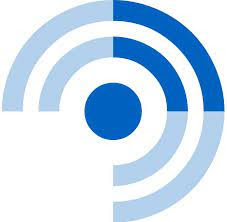
While each peptide has distinct characteristics, this particular combination may present intriguing possibilities when exposed to research models during investigations of regeneration, structural adaptation, and cellular communication. This article examines the potential roles of the BPC-157 and TB-500 peptide blend, highlighting its implications for molecular pathways, tissue organization, and broader implications in experimental research.
Structural and Functional Overview
● BPC-157: A Pentadecapeptide with Hypothetical Regenerative Properties
BPC-157 is a synthetic pentadecapeptide derived from an endogenously occurring gastric protein fragment. Investigations suggest that this peptide may interact with cellular pathways involved in tissue integrity and repair mechanisms. Due to its association with vascular structures, extracellular matrix components, and growth-related signaling, research suggests that BPC-157 may be relevant in studies addressing angiogenesis, cell migration, and wound dynamics.
It has been hypothesized that BPC-157 may interact with nitric oxide pathways and cellular adhesion molecules, aspects that may be further explored in regenerative biology. Additionally, research suggests that observing its presence in research models may contribute to the study of neuromodulation, neurotransmitter balance, and neuroplasticity.
● TB-500: A Synthetic Analog of Thymosin Beta-4
TB-500 is a peptide modeled after Thymosin beta-4, an endogenously occurring protein involved in cellular movement and structural organization. It has been theorized that TB-500 might contribute to cytoskeletal regulation, particularly through interactions with actin polymerization. This property may be relevant in research exploring cellular motility, tissue remodeling, and dynamic structural adaptation within a research model.
Studies suggest that TB-500 may interact with myosin and actin filament organization, which may be further examined in cellular repair mechanisms and tissue connectivity. Additionally, its possible role in cellular migration and matrix composition warrants deeper investigation in fields such as musculoskeletal research and experimental tissue engineering.
Hypothetical Synergistic Properties
The combination of BPC-157 and TB-500 has been theorized to exhibit complementary properties that may be relevant in experimental models of cellular and tissue response. Studies suggest that while BPC-157 might support vascular development and extracellular matrix stabilization, TB-500 may facilitate cellular migration and cytoskeletal organization.
Investigations purport that their combined presence may be explored in studies focusing on tissue regeneration, structural adaptation, and cellular remodeling.
Potential Research Domains
● Tissue and Regenerative Research
One area in which the BPC-157 and TB-500 peptide blend may hold research significance is in tissue engineering. Studies suggest that the peptides may be involved in cellular adhesion, proliferation, and matrix remodeling, all of which are critical factors in regenerative research.
Research into synthetic scaffolds, biomaterials, and engineered tissue constructs might explore the peptide blend's potential to interact with complex biological environments. Additionally, it has been theorized that their molecular interactions may contribute to investigations into bioactive materials, hydrogel-based matrices, and extracellular polymer networks that simulate biological conditions.
● Angiogenesis and Vascular Studies
It has been hypothesized that BPC-157 and TB-500 may interact with vascular pathways, potentially supporting the behavior of endothelial cells and microvascular formation. Investigations purport that their presence may be examined in studies related to capillary networks, tissue perfusion, and vascular adaptation in experimental settings. Further experiments conducted involving research models might explore how the peptide blend supports cellular junctions, vascular remodeling dynamics, and interactions with angiogenic factors.
● Cellular Migration and Cytoskeletal Dynamics
Research suggests that TB-500 may be involved in regulating actin filaments, a fundamental aspect of cellular movement. The peptide blend might be investigated in studies focusing on cytoskeletal remodeling, cellular motility, and dynamic tissue interactions.
Investigations purport that their interplay within structural frameworks may provide insight into how cellular remodeling affects regenerative implications. Additionally, experimental inquiries may explore their implications on cellular adhesion proteins, integrin interactions, and the regulation of cytoskeletal tension.
● Neurological and Musculoskeletal Research
While speculative, the peptides may be explored in studies related to neuronal plasticity and musculoskeletal adaptation. Research suggests that their properties may be relevant in experimental models examining cellular communication, synaptic modulation, and structural integrity within neural and musculoskeletal frameworks.
It has been hypothesized that their interactions with neurovascular structures might warrant a deeper inquiry into synaptic organization, neurotransmitter balance, and neural matrix remodeling.
Within musculoskeletal research, investigations purport that the peptide blend might contribute to studies addressing connective tissue modulation, cellular signal transduction, and muscle fiber differentiation.
● Experimental Inquiries into Cellular Stress Responses
Further speculative research might explore how the peptide blend interacts with cellular mechanisms underlying stress adaptation. Investigations suggest that the peptides may be examined in studies assessing oxidative balance, enzymatic modulation, and protein folding dynamics within research models.
Conclusion
The speculative nature of peptide research continues to evolve, with increasing interest in molecules that might contribute to regenerative and adaptive processes within an organism. The BPC-157 and TB-500 peptide blend has been hypothesized to exhibit properties relevant to tissue engineering, cellular migration, and structural adaptation, providing a foundation for experimental investigations.
As studies continue to uncover deeper insights, further explorations will be essential in broadening the understanding of peptide-based scientific implications. Click here to read another study about this blend.
References
[i] Bakrač, Ž., & Šikić, P. (2019). Pentadecapeptide BPC 157 enhances the growth hormone receptor expression in tendon fibroblasts. Journal of Orthopaedic Surgery and Research, 14(1), 1â€"10. https://doi.org/10.1186/s13018-019-1242-6
[ii] Goldstein, A. L., & Hannappel, E. (2009). Thymosin beta 4: A multi-functional regenerative peptide. Annals of the New York Academy of Sciences, 1194(1), 1â€"10. https://doi.org/10.1111/j.1749-6632.2009.03867.x
[iii] Sorg, H., Tilkorn, D. J., Hager, S., Hauser, J., & Mirastschijski, U. (2017). Animal models of wound healing: A systematic review. Wound Repair and Regeneration, 25(4), 591â€"599. https://doi.org/10.1111/wrr.12567
[iv] Chopp, M., & Zhang, Z. G. (2015). Thymosin beta 4 as a restorative/regenerative therapy for neurological injury and neurodegenerative diseases. Expert Opinion on Biological Therapy, 15(Suppl 1), S9â€"S12. https://doi.org/10.1517/14712598.2015.1051528
[v] Sikiric, P., et al. (2010). Stable gastric pentadecapeptide BPC 157: A novel therapy in gastrointestinal tract. Current Pharmaceutical Design, 17(16), 1612â€"1632. https://doi.org/10.2174/138161211796150252
IGIHE
